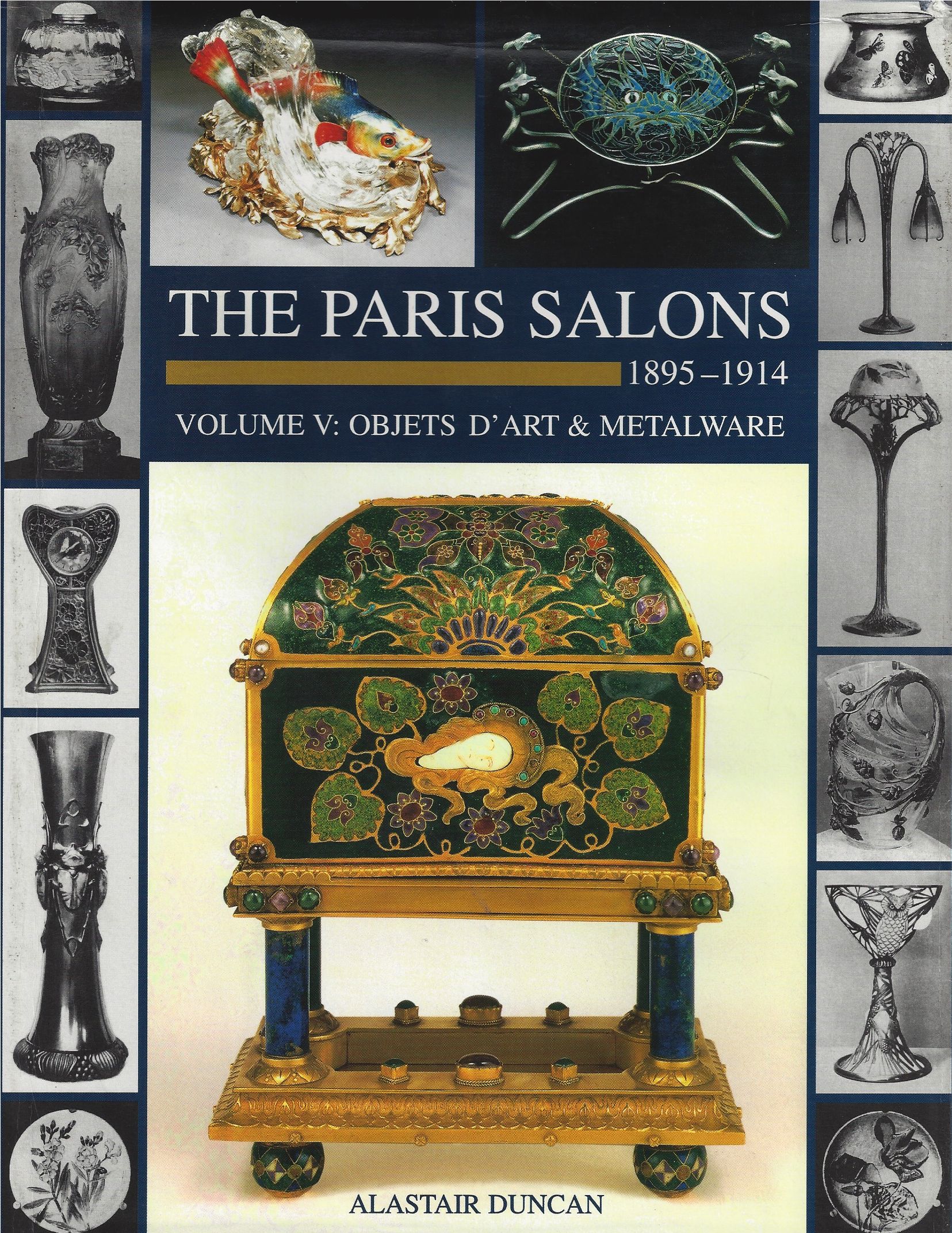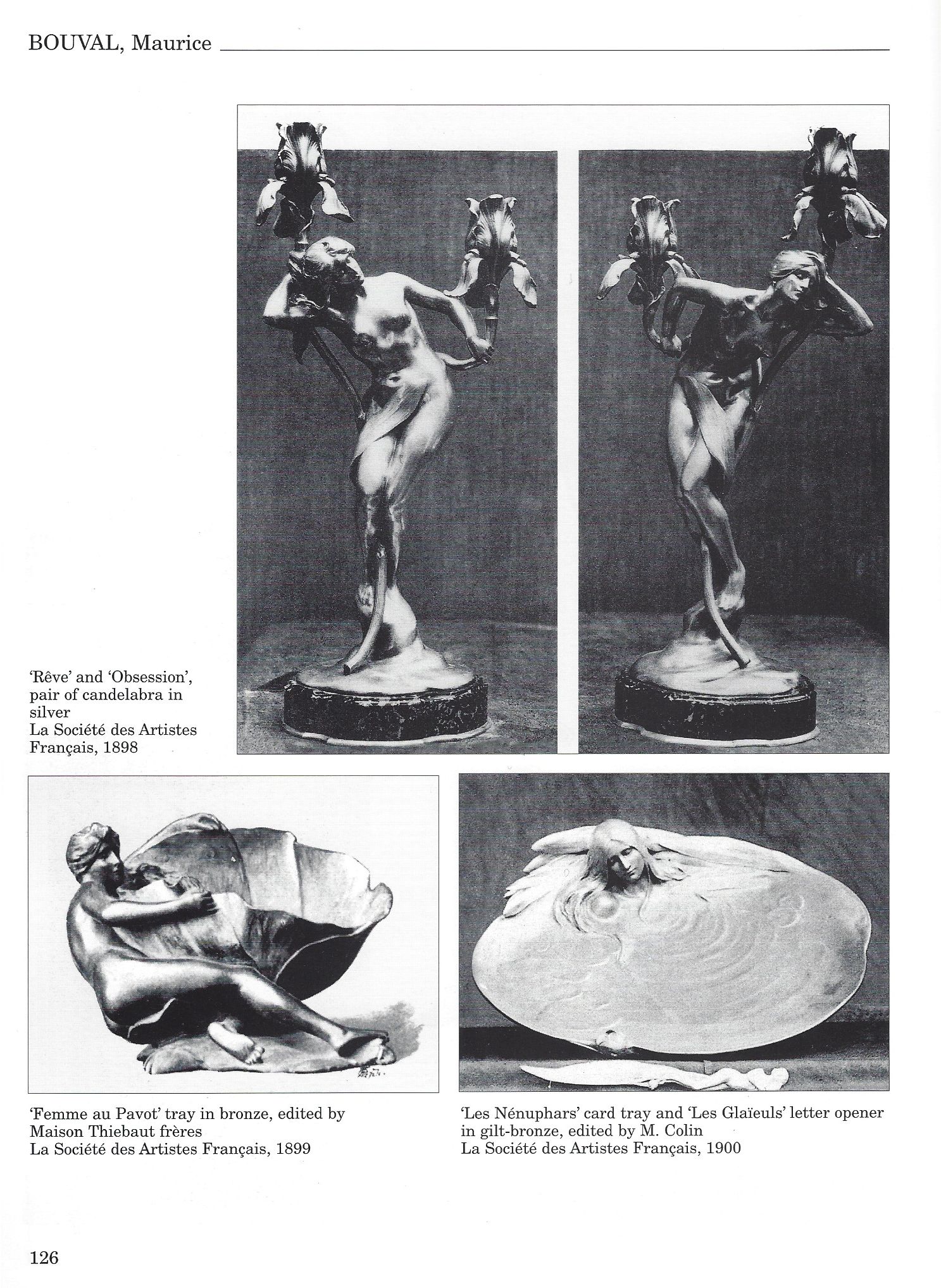Cast to depict a reclining female nude at water’s edge looking at her reflection, inscribed M. Bouval
5 ½ in (14 cm) high, 10 ¼ in (26 cm) wide, 7 in (17.8 cm) deep, including the base
cf. Alastair Duncan, The Paris Salons 1895-1914, Volume V: Objets d’Art & Metalware, 1999, pp.126-129
Pierre Kjellberg, Bronzes of the 19th Century: Dictionary of Sculptors, 1994, pp.139-140
He participated in the 1890 Universal Exposition in Paris and exhibited at the Société des Artistes Français regularly, first as a sculptor and then in the decorative arts sections. He also exhibited with La Maison Goldscheider and at least three founders cast his bronzes – Colin, Jollet, and Thiebaut Frères.
A bronze inkwell by Bouval is held in the collections of the Musée d’Orsay.
















